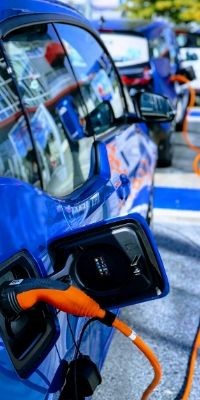
Can electric vehicles work in hotter or colder temperatures like internal combustion engine cars? This not really given much attention when purchasing an EV. Those living in the winter belt should consider this factor when buying a brand new EV.
Can electric vehicles work in hotter or colder temperatures like internal combustion engine cars? This not really given much attention when purchasing an EV. Those living in the winter belt should consider this factor when buying a brand new EV. The highlight of the article is winter performance. It seems quantifying performance in colder temperatures is something not glossed on. So, far internal combustion engines are the best options for cold conditions.
Can electric vehicles work in hotter or colder temperatures like internal combustion engine cars? This not really given much attention when purchasing an EV. Those living in the winter belt should consider this factor when buying a brand new EV. The highlight of the article is winter performance though. It seems quantifying performance in colder temperatures is something not glossed on. Internal combustion engines are the best options for cold conditions.
Electric vehicles come with a host of problems that are a thorn for their owners. Here they are to set the flow of the article.
A. The cruising range is diminished in cold weather.
B. Powerpack discharges faster.
C. Improvements in overall performance for all-season is needed.
D. Thermal insulation is not enough.
Another set of concern affect EVs more than ICE are these.
A. How the car is driven.
Throttling the speed is a big factor for an EV. Step too hard or go fast, the range goes down. Go slow and surely with a longer range for the power pack. Looking at the power meter is important to adjust the driving speed for a better cruising range.
B. If the temperature is cold or dipping below freezing.
Electricity discharges at a faster rate when it is colder. Take note of the charge before leaving the house. If the EV goes below 20%, it is in the danger zone.
C. Are the road easy to manage, too many stops or not?
Ideally when traveling without many stops will use less power. If there are several stops that eats up more energy to get moving. Hybrids are better with an ICE component. Traveling in a straight line without hindrances charges the battery faster than regenerative braking!
D. How long does it take to charge, or is it done many times?
The cold will lessen the cruising distance along with how long to charge the power pack. Add up the times it will take to charge the car. Wintertime will take a bit, even with a supercharger station. One thorny issue that EV car owners hope will be fixed!
E. Is the trip long or short distance?
Range is compromised for EVs in cold weather. Best used for nearby trips, not far ones.
Plug-in Hybrid Electric Vehicles just need to switch to ICE to extend the range. EVs are at the mercy of its battery pack. In some instances, hybrids are better but still emit carbon emission. ICE car keeps on rolling until there is no gas, with more carbon emissions.
Tips to extend electric vehicle cruising range when in wintertime.
1. Car accessories eat up more power in winter. Use them sparingly to save power. Use devices for heating, not the heater.
2. Use economy mode because it saves power.
3. While charging do preheat to save power and extend the distance traveled.
4. Hard braking will use normal brakes that eat up power. Brake ahead to use the regenerative equipment.
5. At faster than 50 mph, the range goes down! Drive slower, or else.
See Now: OnePlus 6: How Different Will It Be From OnePlus 5?


























